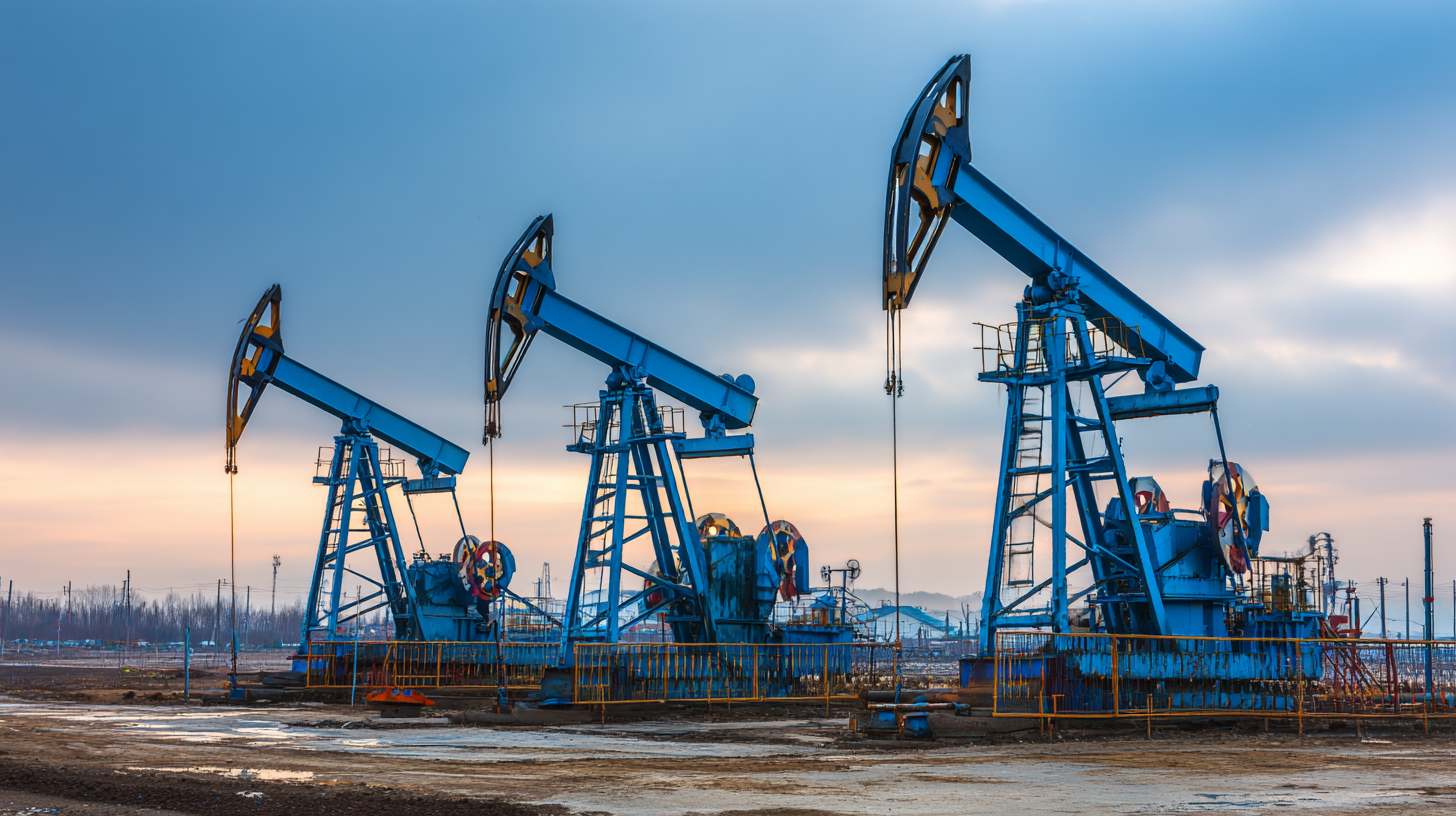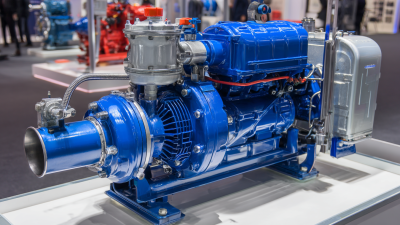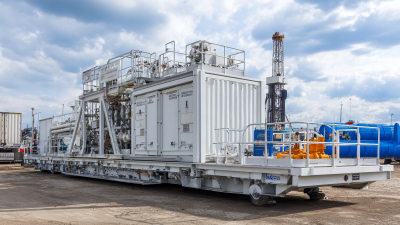Top 5 Oil Well Pumps to Maximize Efficiency and Reduce Costs in 2023
In the dynamic landscape of the oil and gas industry, the need for efficient and cost-effective solutions has never been more critical. As reported by the International Energy Agency (IEA), global oil demand is projected to reach 104.1 million barrels per day by 2023, necessitating advancements in production technologies. Among these advancements, the choice of oil well pump plays a significant role in maximizing extraction efficiency and reducing operational costs. According to a recent study by the Energy Information Administration (EIA), optimizing pumping technologies can lead to a reduction in energy costs by up to 20%, highlighting the importance of selecting the right equipment.
As oil producers face increasingly challenging market conditions, the stewardship of resources becomes paramount. The implementation of advanced oil well pumps not only improves the overall yield of wells but also enhances the longevity and sustainability of operations. Research shows that the integration of innovative pumping solutions can significantly minimize downtime and maintenance expenses, which averaged over $10 billion in losses for the sector in 2022 alone. Thus, understanding the top oil well pump options available in 2023 is crucial for industry stakeholders aiming to enhance productivity while keeping an eye on expenditure. In this article, we delve into the five best oil well pumps that promise to drive efficiency and cost-effective operations in the year ahead.

The Impact of High-Efficiency Pump Technology on Oil Production in 2025
The landscape of oil production is undergoing a significant transformation as
high-efficiency pump technology is poised to play a crucial role in shaping the industry by 2025.
With the global artificial lift systems market projected to grow from $13.71 billion in 2025 to $20.41 billion by 2032, at a
compound annual growth rate of 5.85%, the emphasis on adopting advanced pumping solutions has never been more critical. One notable
innovation is the "single well dual pump" technology, which has been successfully implemented in the Bohai Sea, addressing the
extraction challenges associated with complex multi-layered reservoirs.
In addition to improving extraction efficiency, these advanced technologies are aligned with the broader goals of low-carbon transformation in oil fields.
Embracing a spectrum of green technologies, from material breakthroughs to process optimization, signifies a shift towards more
sustainable practices in the industry. As companies strive to reduce their carbon footprint, integrating efficient pumping systems will not only enhance
production capabilities but also contribute to environmental sustainability, reflecting the industry's commitment to a greener future.
Evaluating the Cost-Benefit Analysis of Top Oil Well Pumps Based on 2023 Performance Data
In 2023, the performance of oil well pumps has shown significant improvements, leading to enhanced cost-effectiveness in extraction operations. A thorough cost-benefit analysis reveals that many modern pumps offer advanced technology, such as variable frequency drives (VFDs) and smart monitoring systems, which contribute to increased efficiency. These innovations not only lower energy consumption but also extend the lifespan of the equipment by reducing wear and tear.
When assessing the top oil well pumps, it becomes clear that factors such as maintenance costs, energy efficiency, and output capacity are critical in determining overall value. For instance, pumps equipped with remote monitoring capabilities allow operators to anticipate issues before they escalate, minimizing downtime and repair expenses. Consequently, investing in high-quality pumps can lead to substantial long-term savings, making them a vital component for operators aiming to maximize production while controlling expenses.

Comparative Study: Conventional vs. Electric Submersible Pumps in 2025 Market Trends
In the evolving landscape of oil extraction, the choice between conventional pumps and electric submersible pumps (ESPs) is pivotal for optimizing both efficiency and operational costs. By 2025, the market is expected to witness significant advancements that will influence this decision. Conventional pumps, while reliable and familiar, often encounter limitations in extreme conditions, leading to increased maintenance costs and downtime. Their mechanical complexity can also result in inefficiencies, prompting operators to explore alternatives.
Electric submersible pumps have emerged as a strong contender, particularly due to their ability to adapt to varying production rates with minimal energy consumption. As technology advances, ESPs are becoming increasingly efficient, with improved motor designs and enhanced operational capabilities in challenging environments. Their lower maintenance requirements and ability to operate in deeper reservoirs can significantly reduce overall costs, making them an attractive option for oil producers. As the 2025 market trends develop, a detailed comparative analysis of these two pumping systems will be essential for companies aiming to maximize output while minimizing expenditures.
Advancements in Pump Design and Materials That Reduce Operational Downtime in Oil Extraction
In 2023, the oil extraction industry continues to benefit from significant advancements in pump design and materials, aiming to reduce operational downtime and enhance efficiency. For instance, the introduction of advanced composite materials has led to pumps that are more resistant to corrosion and wear. According to a recent report by the International Energy Agency (IEA), these innovations have reduced maintenance needs by up to 30%, resulting in substantial cost savings for oil operators.

Furthermore, the integration of smart technology in oil well pumps has transformed how operators monitor and manage fluid dynamics. Real-time data analytics allow for predictive maintenance, enabling companies to address potential issues before they lead to costly failures. A study by the American Petroleum Institute (API) indicates that companies deploying smart pump systems have experienced a 20% increase in production efficiency due to minimized downtime. Enhanced sealing technologies and modular designs also facilitate quicker repairs, significantly reducing the overall operational costs associated with pump failures.
These improvements not only streamline production processes but also drive sustainability in the oil extraction sector, aligning with global initiatives aimed at reducing environmental impact. As the industry adopts these advanced pumping solutions, we expect to see continued progress in both efficiency and cost-effectiveness.
Key Industry Metrics for Selecting the Best Pumps to Drive ROI in Oil Production in 2025
When selecting oil well pumps to drive ROI in oil production by 2025, it's crucial to focus on key industry metrics that can significantly impact overall efficiency and cost-effectiveness. One of the primary metrics to consider is the pump's operating efficiency, which is often measured by its ability to optimize energy consumption relative to the volume of oil extracted. High-efficiency pumps reduce operational costs, thereby directly enhancing profitability.
Additionally, assessing the maintenance requirements of various pump models is vital. Pumps that require less frequent maintenance or have lower downtime can lead to substantial savings over time. Monitoring metrics such as mean time between failures (MTBF) and the total cost of ownership (TCO) will help operators make informed decisions about which pumps will offer the best returns. Furthermore, considering advancements in technology, such as smart pump systems equipped with IoT capabilities, can provide valuable real-time data that improves production strategies and minimizes wastage, ultimately driving higher ROI in oil production.
Related Posts
-

How to Select the Right Fracking Pump for Your Oil and Gas Operations
-

Streamlining Efficiency: Innovative Solutions for Gas Well Pump Operations in Oil and Gas Industry
-

What is a Flo Jet Pump and How It Enhances Efficiency in Water Circulation Systems
-

Exploring Market Trends: Ultra Jet Pumps at the 138th Canton Fair 2025 in China
-

Exploring Market Trends: Ultra Jet Pump Innovations at the 138th China Import and Export Fair 2025
-

Why Frac Pumps Are Essential for Maximizing Hydraulic Fracturing Efficiency
